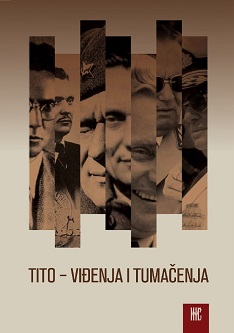Osavremenjivanje mita maršala Tita: Digitalne sadašnjosti poništenih prošlosti
Modernization of Marshal Tito's Cult: Digital Todays of Deleated Yesterdays
Author(s): Martin Pogačar
Subject(s): Media studies, Electronic information storage and retrieval, History of ideas, Political history, Sociology of Culture, Sociology of Politics
Published by: Institut za noviju istoriju Srbije
Keywords: mobility; media objects; media reality; representation; Josip Broz Tito; post-socialism;
Summary/Abstract: Postsocialist realities are shaped by the digital communication technologies in side the framework of the digital media ecology (DME). Changes in understanding of the past preservation, archivation, reinvention and reinterpretation are induced by the development of technology in the media sphere. DME provides space and tools for re-emergence of history through individual storytelling. Digital display of the Yugoslav past finds its on-line manifestations in numerous exhibiting stiles, genres, strategies, connecting encyclopedic entries, blogs, personal web pages, audio and visual recordings, social networks, online museums. One of the most intriguing subjects, which is continuously repeating in post-Yugoslav past relationships is the most prominent icon of socialism – Josip Broz Tito. The article analyzes two cases of dealing with Tito’s heritage in the Digital Media Ecology: video „Jugoslavijo" posted at YouTube and internet page www.tito-bihac.org. Different audio/visual contents are combined in a specific Digital Media Objects, which are creating new personal and consequently collective visions of the past Analizing the capacities of digital presentation of the past as the space for social and/or political activity, the author states that digital media practices have a deeper meaning that surpasess a mear nostalgia, reinvention of the past, or a simple joke. Furthermore, in DME shared creativity together with the interpretations of the past can provide wider framework on the usage of the Yugoslav history.
Book: Tito - Viđenja i tumačenja
- Page Range: 639-651
- Page Count: 13
- Publication Year: 2011
- Language: Serbian
- Content File-PDF

